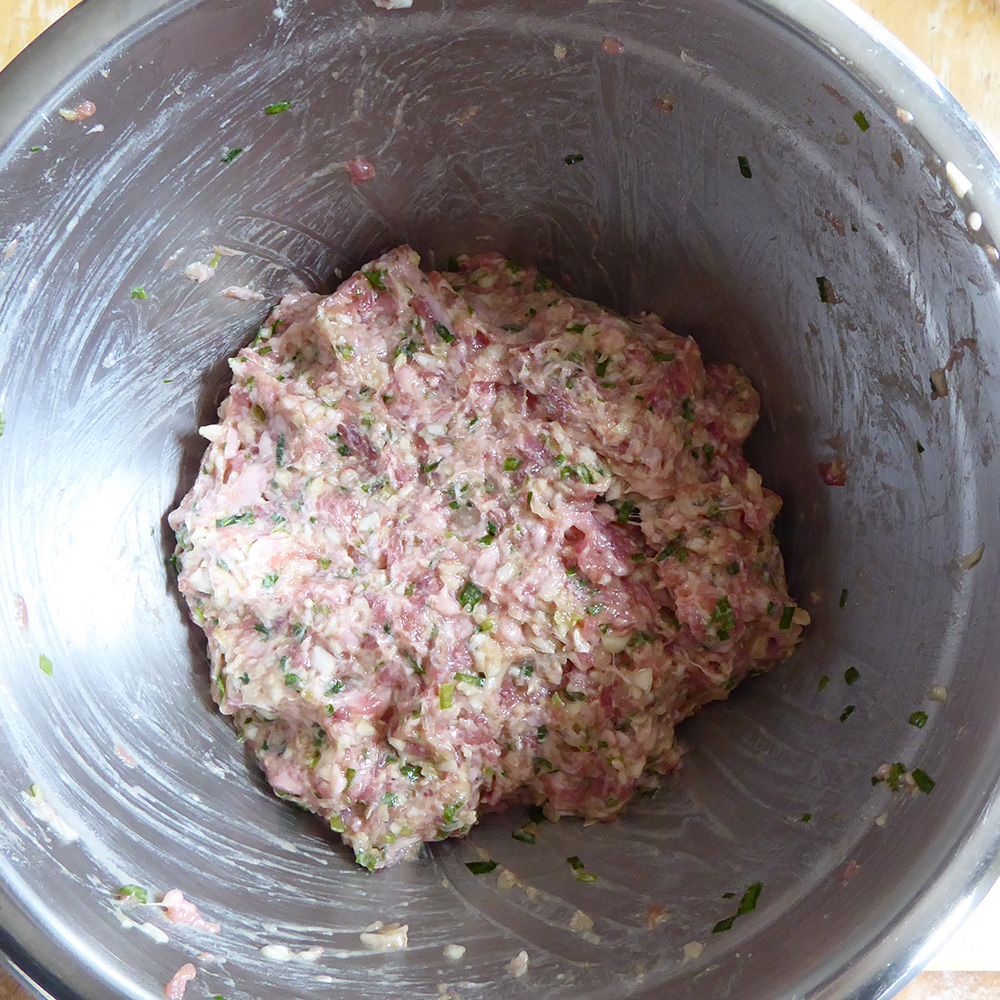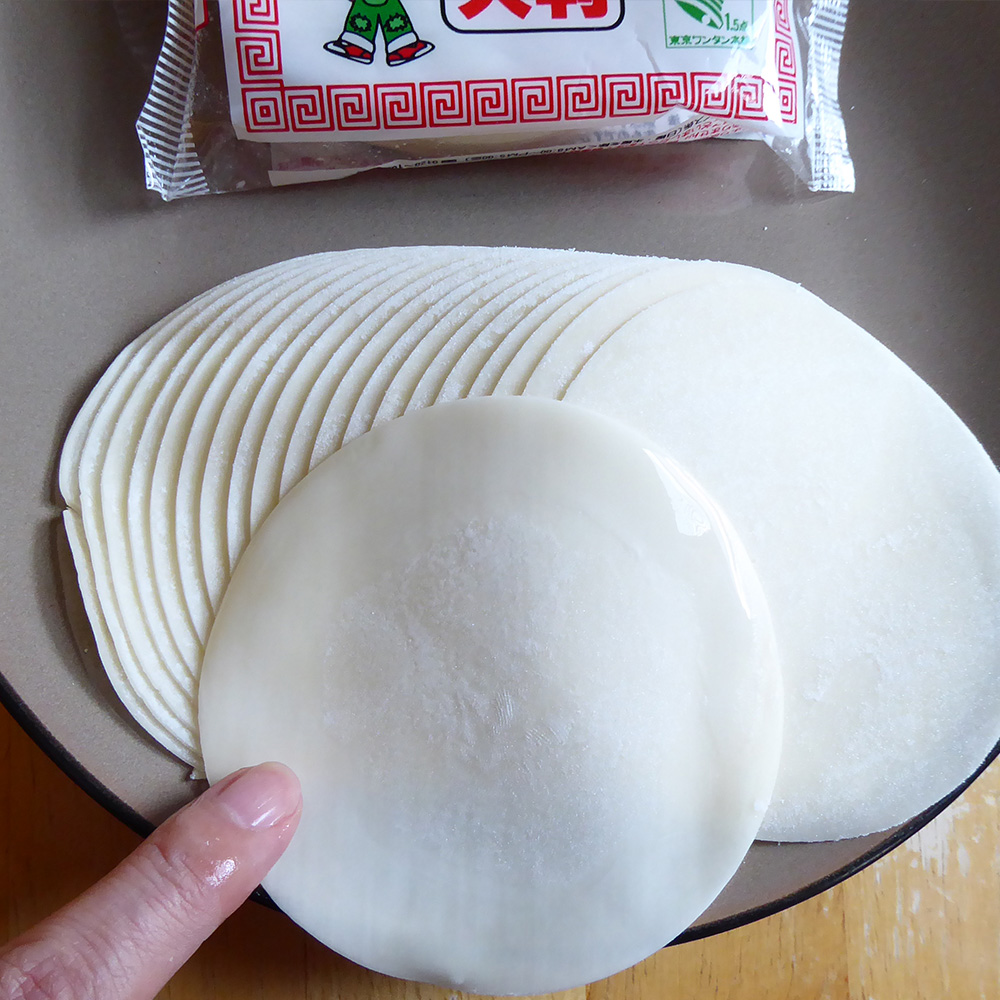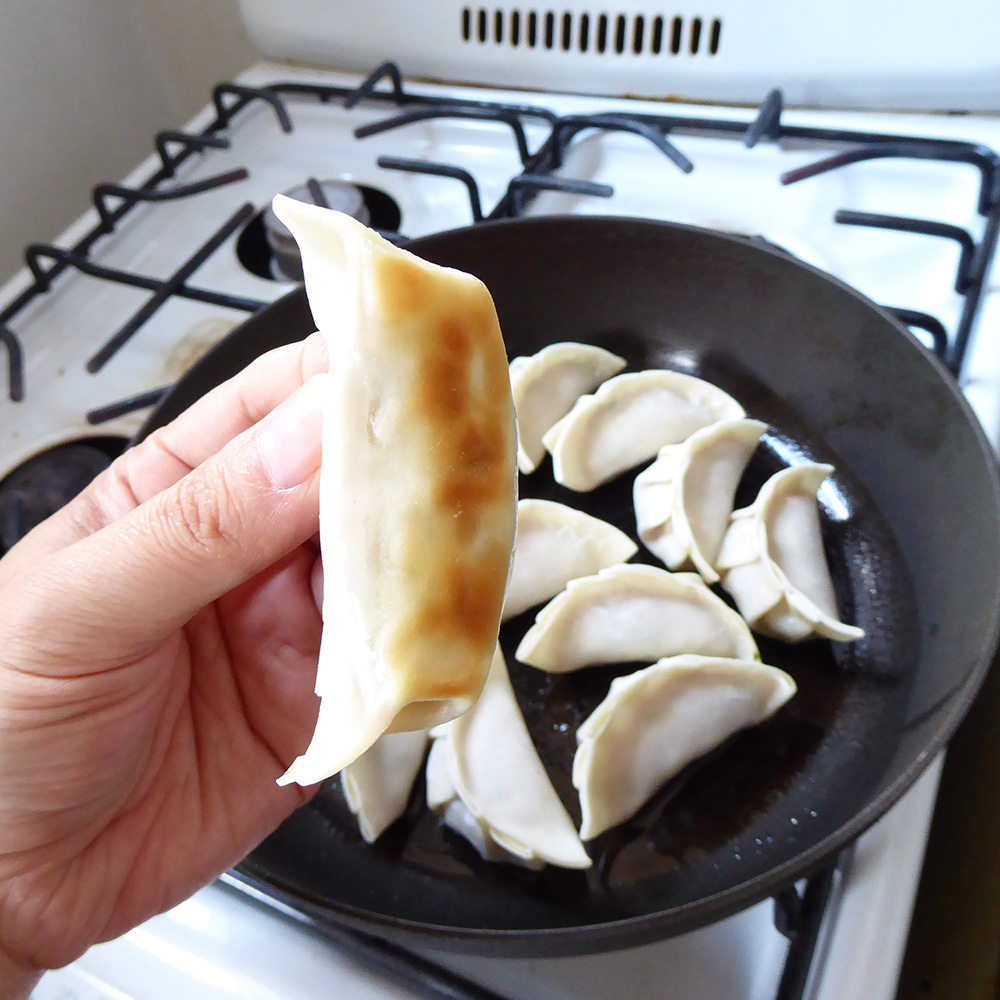Gyoza is a very popular dish in Japan, mainly as one of the best companions to beer and/or ramen. If you have ramen, you almost have to have gyoza and beer. But gyoza can shine as an independent dish, especially when it’s homemade.

The recipe I share here is a very standard one based on my mom’s recipe, using simple ingredients like ground pork, cabbage, and garlic chives. You can explore many variations of ingredients based on your preference. For me, garlic chives provide enough flavor so I don’t add ginger or garlic, but feel free to add if you like some more flavor to it.
I usually use store bought dumpling wraps (gyoza skin) but you can make it pretty easily at home too. It’s useful to know how to make it when you have some filling leftover but don’t want to buy a full package of the wrap. So I listed its recipe below as well. Since homemade wrap is thicker than store bought ones, I recommend boiling the dumplings made with it instead of pan fry. You can enjoy the nice chewy texture of the homemade wrap which is different from the pan fried one.

I often make over 100 dumplings and keep them in the freezer uncooked. Making this many dumplings is almost therapeutic and very satisfying to see it all prepared on the tray. Pick a nice lazy weekend to make them and enjoy for weeks to come.

Ingredients:
Makes about 100 gyoza
- Ground pork 1 lbs
- Cabbage minced 2 cups
- Garlic chives minced 1 cup
- Soy sauce 2 tbsp
- Sesame Oil 2 tbsp
- Salt 1/2 tsp
- White pepper 1/2 tsp
- Broth (chicken or vegetable, or just water) 1/4 cup
- Dumpling wrap 100 pieces
Dipping Sauce:
- Mix 50% soy sauce, 50% vinegar, and a dash of chili oil
Homemade wrap:
- Flour (use bread flour if you have it) 1 1/4 cup
- Hot water 1/2 cup
- Salt one pinch
Directions:
- Mince cabbage and garlic chive and put in a large bowl.

- Add ground pork, soy sauce, sesame oil, salt, and broth to the bowl, and mix until it becomes sticky. It should be a little watery and loose. If you have time, let it sit in the fridge for 30 min or longer. Drop a piece of plastic wrap directly on the filling to seal it from air, then put another piece to over the bowl.

- Now it’s a fun part: wrapping!
Take a sheet, and put a little water on the edge, on both sides. Put a small spoonful of filling on the center of the wrap.

- Fold the wrap in half, and fold the edge on one side as shown. If it’s too difficult or no time to practice, just fold in half and pull both end towards the center and seal with water. Make sure the edges are sealed without opening, otherwise you will lose the soup during cooking.
Place a plastic wrap on a tray or dish, and place the wrapped gyoza on it. Once it’s full, cover with another piece of plastic and place in the freezer. If you can’t cook right away, freeze them instead of refrigerate, to prevent them from becoming soggy.

- Heat up a frying pan in medium heat. Use one with a lid. Once it’s warmed up, add oil and place gyoza and cook until it’s brown on the bottom.

- Once it’s brown, add 1/4 cup of hot water in the pan and cover with the lid immediately, let the steam fill inside.

- It’s done when they puffed up. Remove cover and cook to let the remaining liquid go until it becomes crispy at the bottom.
Tips:
- If you run out of store bought wrap, make homemade wrap!
1. Mix flour, hot water and salt in a bowl and mix until you can kneed it with your hand. If it’s too flakey, add some more water.
2. Put it into a ball and leave it at least 30 min in the bowl covered with plastic wrap.
3. Make a log and cut it in half, then cut one of the half into 8 pieces. Keep the other half in the bowl and keep it covered.
4. Using rolling pin, roll out the small pieces into discs. Sprinkle flour on surface and rolling pin, and sprinkle some more on the discs to prevent them from sticking together.
5. Homemade wraps tend to become thicker than store bought one. It’s perfect for boiled gyoza!
